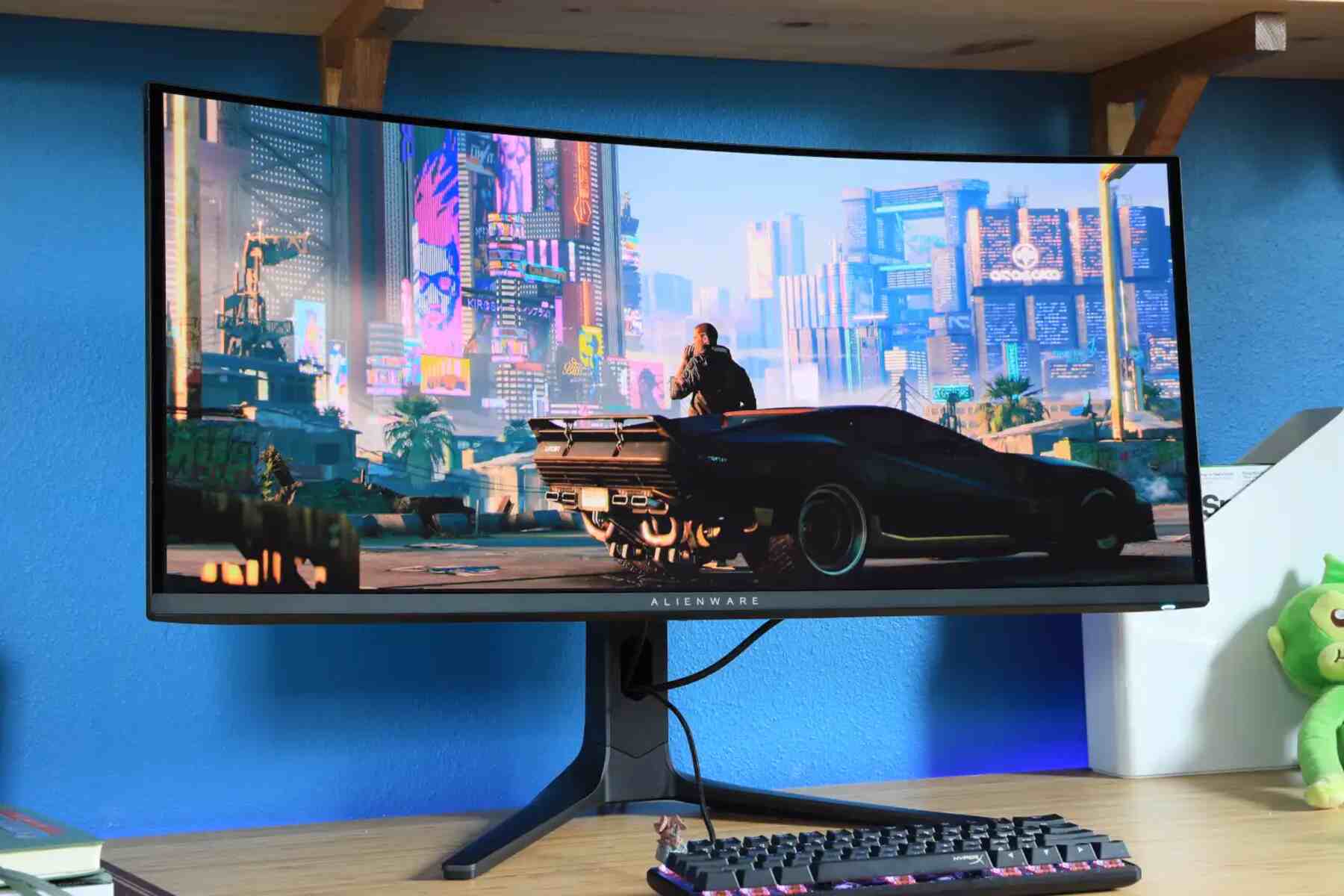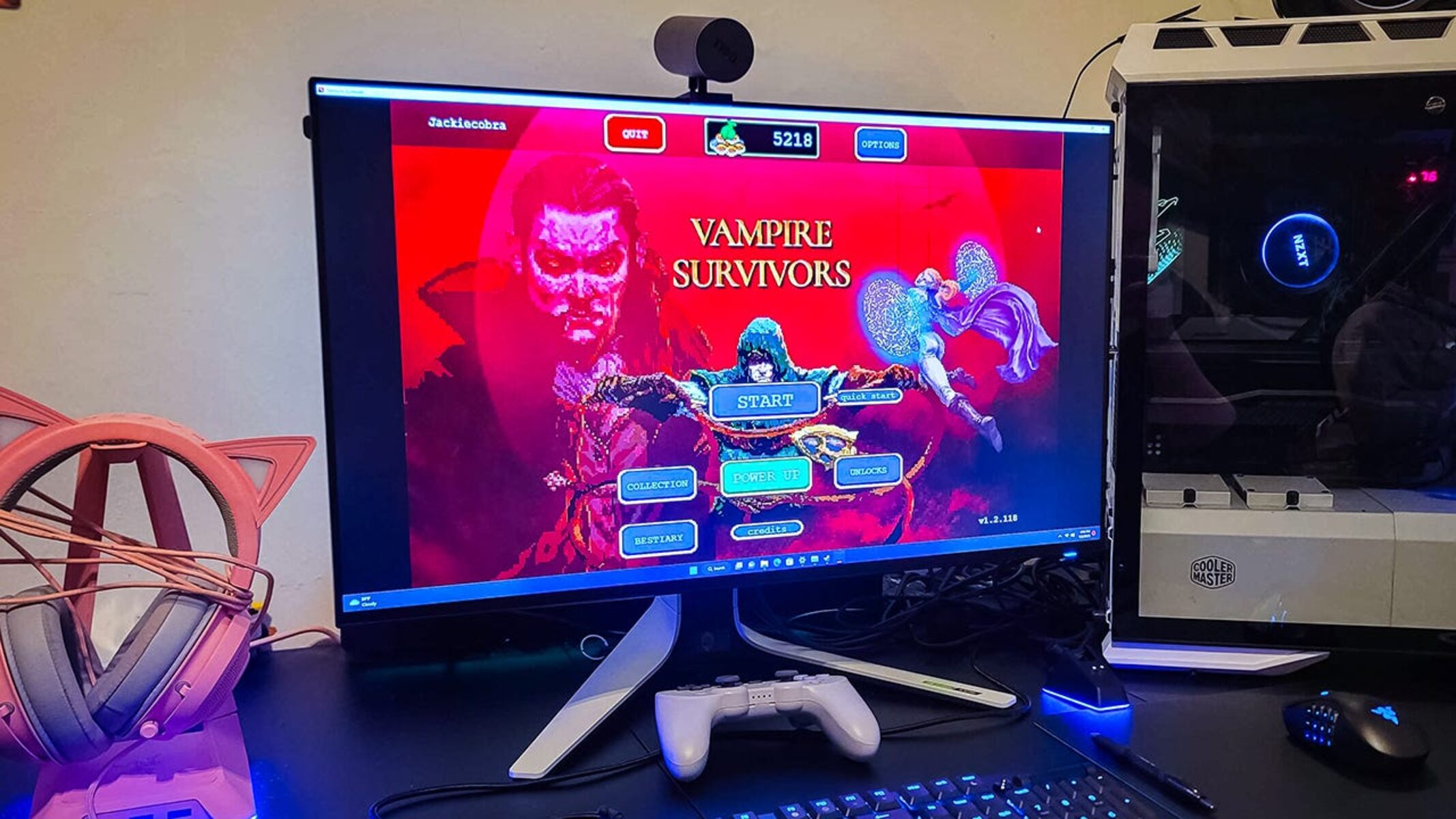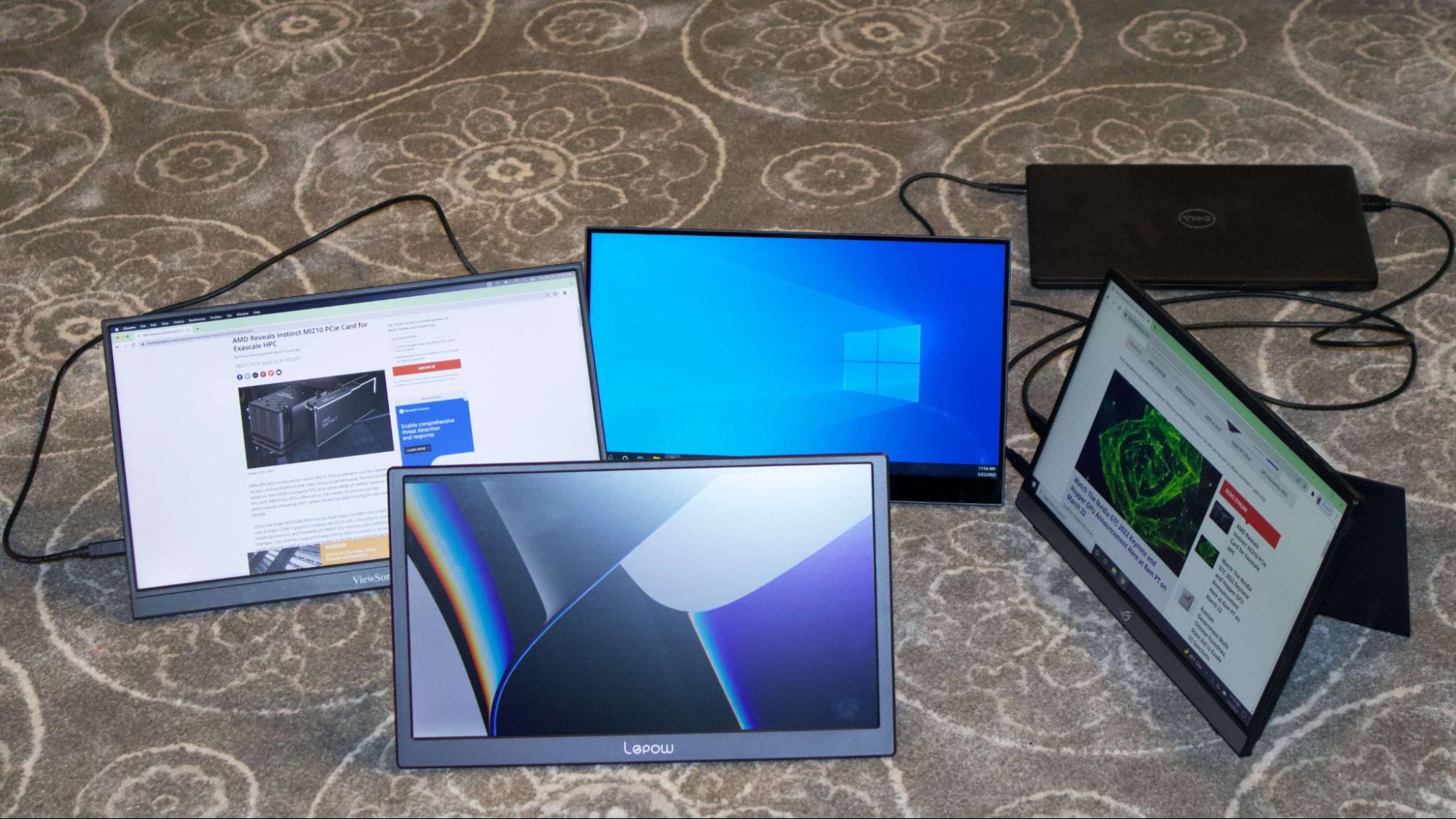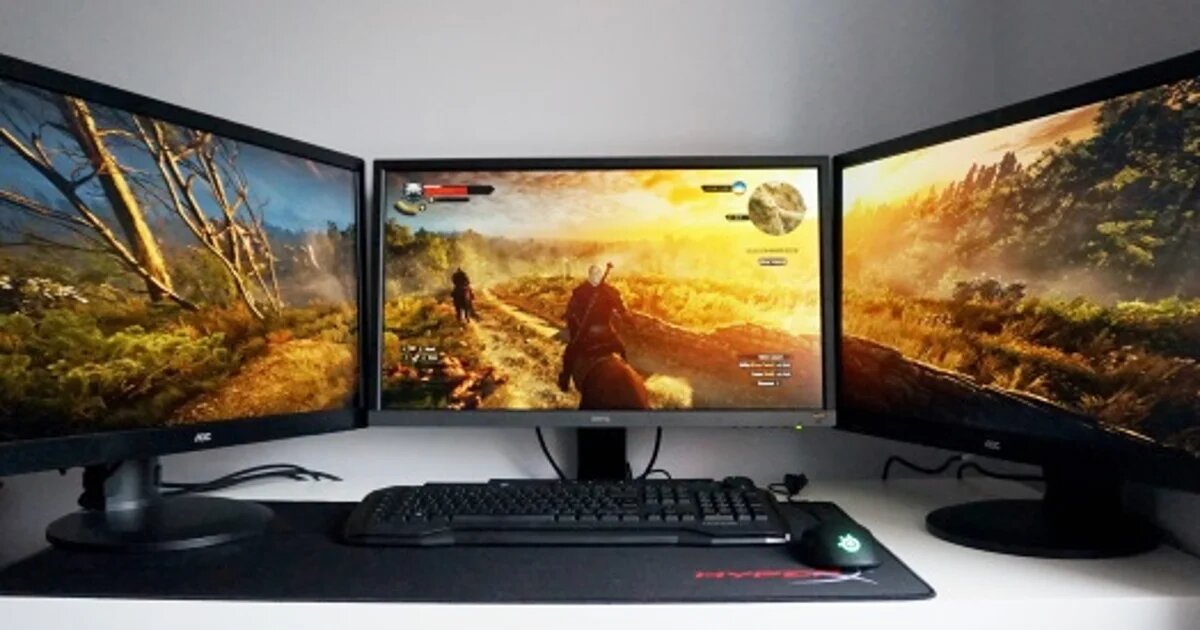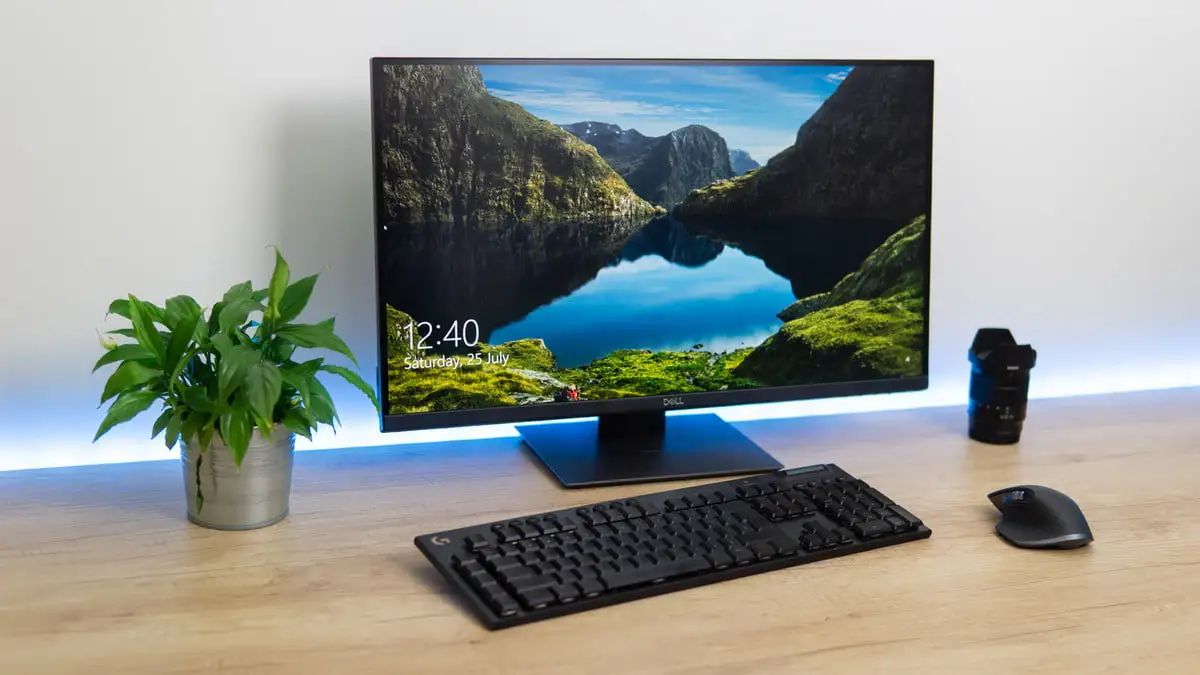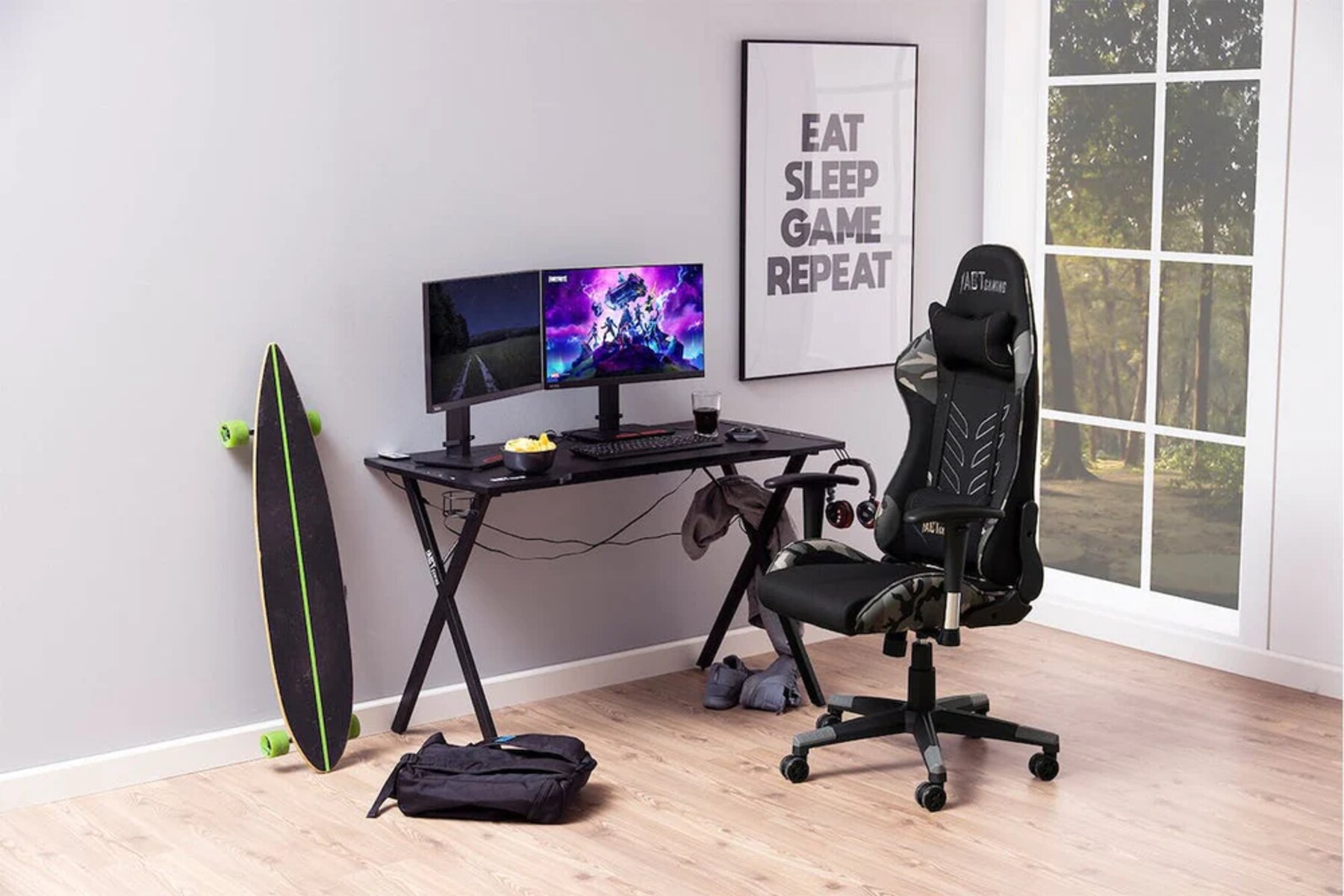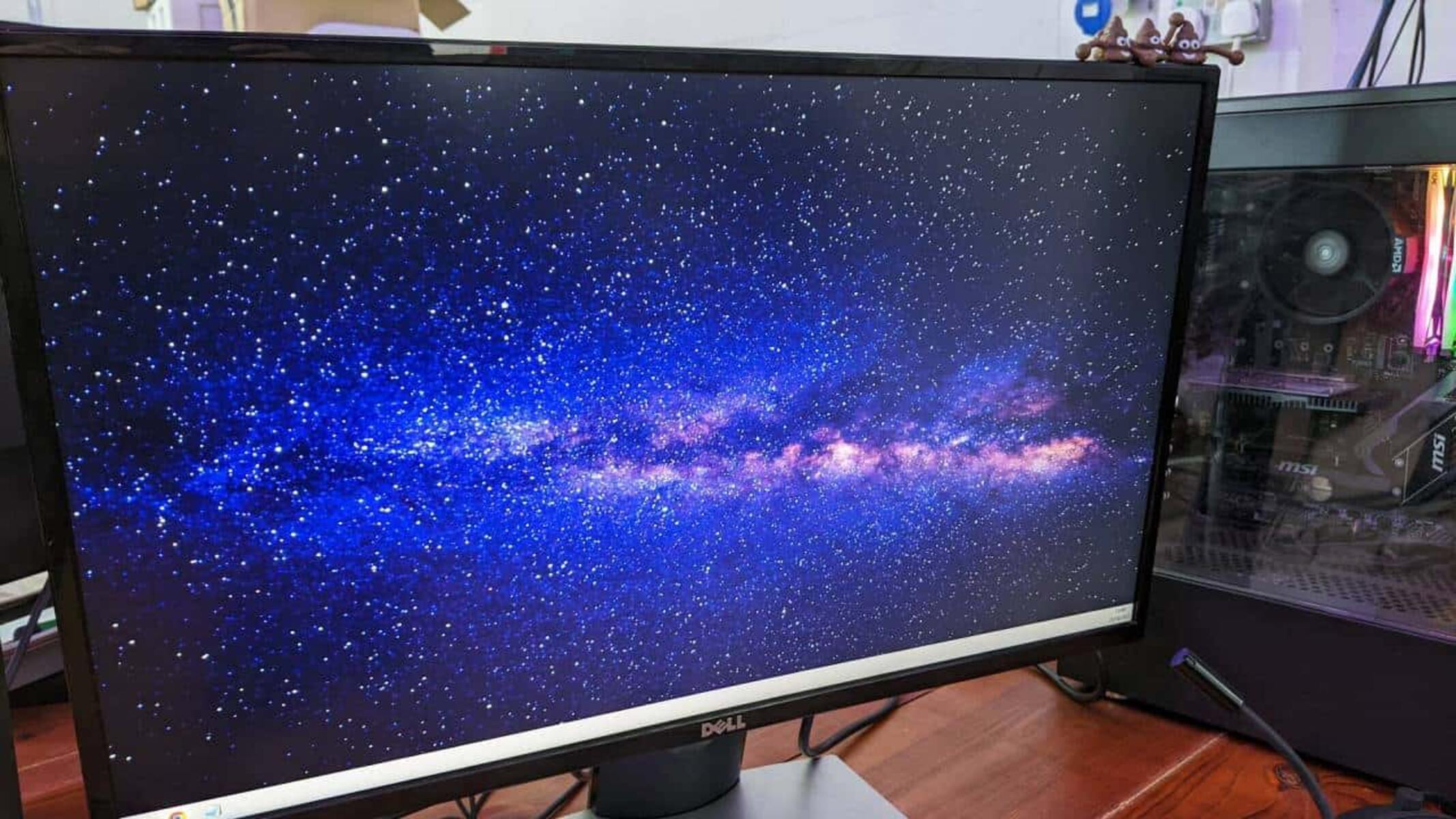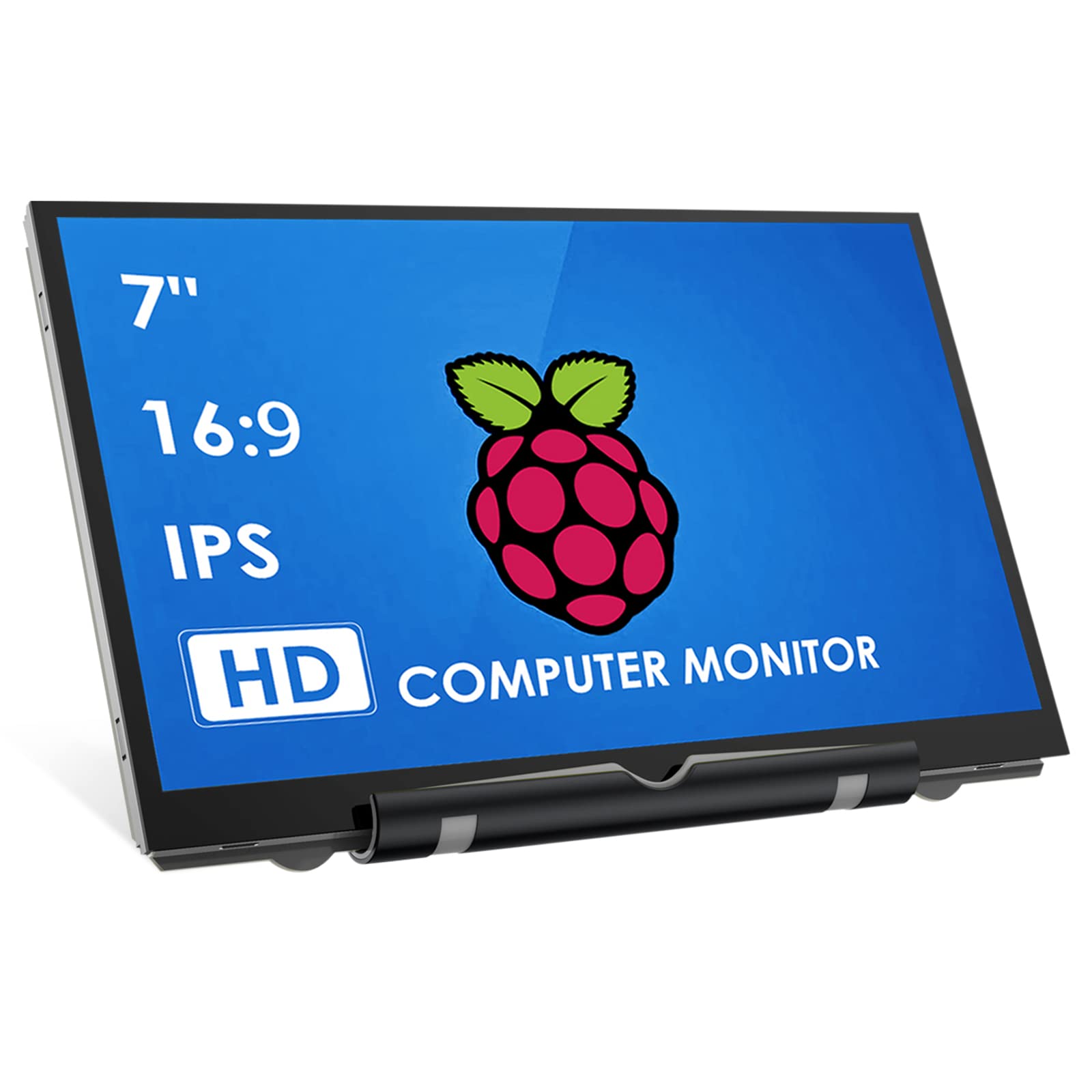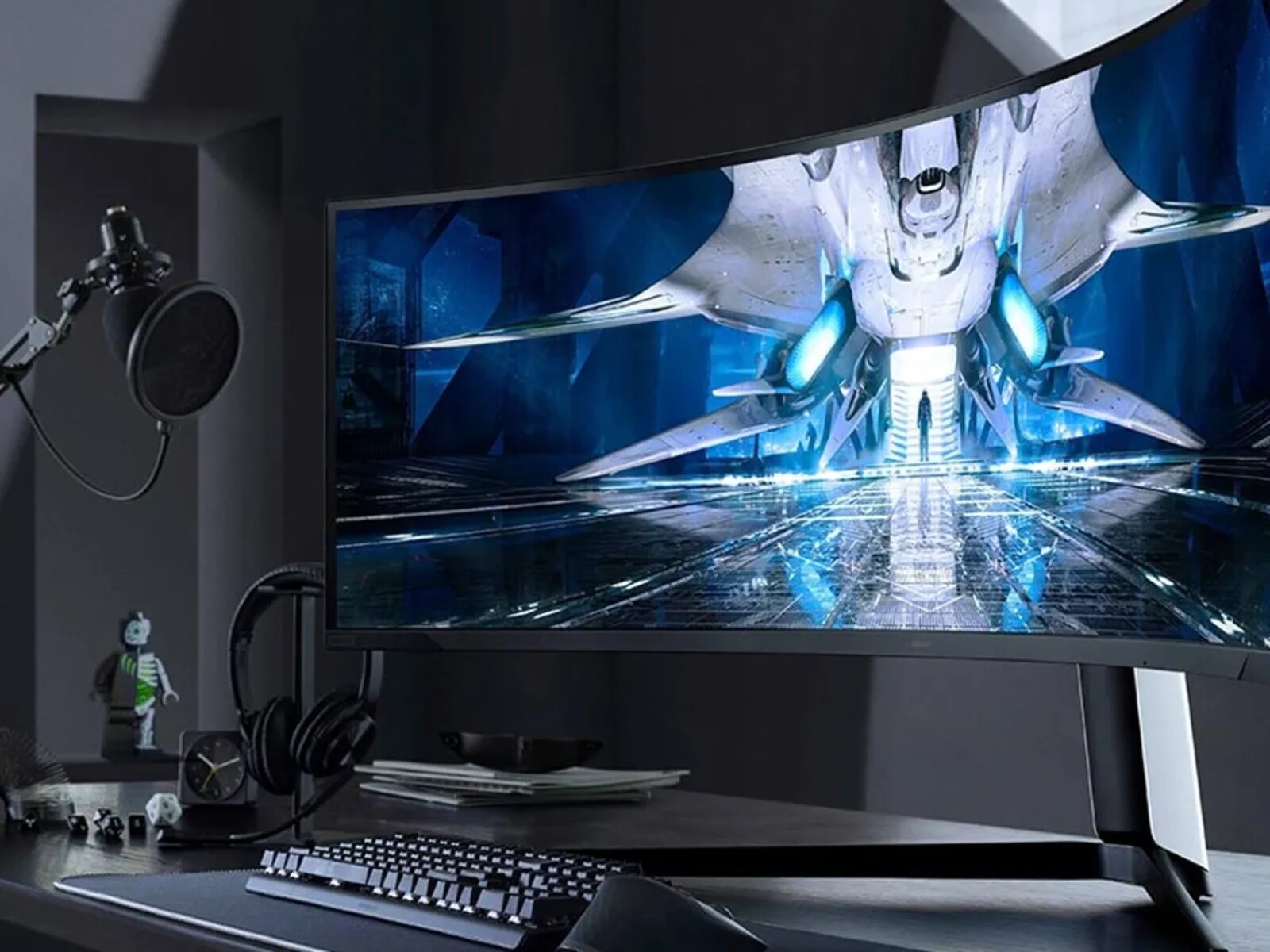Introduction
When it comes to gaming, having the right equipment can greatly enhance your gaming experience. One crucial component is the gaming monitor. The size of your gaming monitor plays a significant role in your overall gaming experience, affecting immersion, visibility, and comfort. But what is a good size for a gaming monitor?
Choosing the right monitor size for gaming can be a daunting task, as there are numerous factors to consider. It’s essential to strike a balance between screen real estate, optimal viewing distance, and your personal gaming preferences.
In this article, we will explore the factors to consider when choosing a gaming monitor size and delve into the benefits of popular monitor sizes. By the end, you’ll have a better understanding of what size gaming monitor will suit your needs and preferences.
Before we dive into the specific monitor sizes, it’s important to note that monitor size is measured diagonally from one corner to another. So when we talk about a 24-inch monitor, it means the diagonal measurement of the screen is 24 inches.
Now, let’s delve into the factors you should consider when choosing a gaming monitor size.
Factors to Consider When Choosing a Gaming Monitor Size
1. Gaming Environment and Available Space:
The first factor to consider is your gaming environment and the space available for your gaming setup. If you have limited space, a smaller monitor may be more appropriate. On the other hand, if you have ample space, you can consider a larger monitor for a more immersive gaming experience.
2. Gaming Preferences and Genres:
Your gaming preferences and the types of games you play are important considerations when choosing a monitor size. For competitive gaming or fast-paced action games, a smaller monitor with a higher refresh rate may be advantageous. However, for immersive RPGs or open-world games, a larger monitor can enhance the visual experience.
3. Screen Resolution and Pixel Density:
The screen resolution and pixel density are crucial factors to consider. Higher resolutions, such as 1440p or 4K, are better suited for larger monitors, as they offer sharper and more detailed visuals. Lower resolutions, like 1080p, may appear pixelated on larger screens.
4. Immersion and Field of View:
A larger monitor can provide a more immersive gaming experience, as it fills a larger portion of your field of view. This can make games feel more engaging and realistic, particularly for first-person shooters or racing games.
5. Refresh Rate and Response Time:
If you’re a competitive gamer, a higher refresh rate and faster response time are crucial for smooth gameplay and reduced motion blur. Smaller, high-refresh-rate monitors are typically preferred in competitive gaming scenarios.
6. Budget Constraints:
Your budget is another key factor. Larger monitors tend to be more expensive, so it’s important to find a balance between your desired size and your budget. Keep in mind that there are great options available at different price points.
Consider all of these factors when selecting a gaming monitor size. By weighing these factors against your personal preferences and gaming habits, you can make a well-informed decision that ensures an optimal gaming experience.
Gaming Environment and Available Space
When choosing a gaming monitor size, it’s important to consider your gaming environment and the available space you have for your gaming setup. The size of your monitor should be proportional to the size of your gaming area and the distance between your eyes and the screen.
If you have limited space, such as a small desk or gaming area, a smaller monitor would be more practical. A 24-inch or 27-inch monitor would be suitable in this case, as it won’t take up too much space and allow you to have a comfortable view of the screen without straining your neck or eyes.
On the other hand, if you have a dedicated gaming room or a spacious gaming setup, you have the freedom to opt for a larger monitor. This can provide a more immersive gaming experience, with a larger field of view and more detailed visuals. A 32-inch monitor or even an ultrawide monitor may be a suitable choice, allowing you to fully immerse yourself in the gaming world.
Consider the layout of your gaming environment as well. If you have a multi-monitor setup or plan to use additional peripherals like a gaming keyboard or joystick, ensure that there is enough space to accommodate everything comfortably. You don’t want a cramped space that hinders your gameplay or causes clutter.
Additionally, think about the viewing distance between you and the monitor. The ideal viewing distance for gaming is typically around 2-3 feet, depending on the monitor size. If you’re sitting too close to a large screen, it might be overwhelming, and you may struggle to see everything clearly. Conversely, if you’re too far from a small screen, you might miss out on details and immersion.
By considering your gaming environment and available space, you can choose a monitor size that fits perfectly into your setup without compromising comfort or functionality.
Gaming Preferences and Genres
Another important factor to consider when choosing a gaming monitor size is your gaming preferences and the types of games you enjoy playing. Different gaming genres may benefit from different monitor sizes, enhancing your gameplay experience.
If you primarily play competitive games like first-person shooters, battle royales, or esports titles, a smaller monitor may be beneficial. Smaller monitors, such as 24 inches, tend to have higher refresh rates and faster response times, giving you a competitive edge. Additionally, a smaller screen size allows for easier eye movement, enabling you to quickly spot enemies or react to fast-paced action.
For those who enjoy immersive RPGs, open-world exploration games, or visually stunning titles, a larger monitor can greatly enhance the gaming experience. With a larger monitor, such as a 27-inch or 32-inch display, you can fully appreciate the detailed environments, intricate graphics, and vibrant colors that these games offer. The increased screen real estate also allows you to see more of the game world, adding to the sense of immersion.
Furthermore, consider the aspect ratio of the monitor. If you’re a fan of cinematic games or enjoy streaming gameplay, an ultrawide monitor may be a suitable choice. Ultrawide monitors provide a wider field of view, allowing you to see more horizontally. This can be especially advantageous in games that support ultrawide resolutions, as it provides a more immersive gaming experience.
It’s essential to understand your own gaming preferences and the genres you gravitate towards. Consider the type of games you enjoy playing and how different monitor sizes can enhance your gameplay. This will help you choose a monitor size that aligns with your gaming preferences and offers the most immersive and enjoyable gaming experience.
Screen Resolution and Pixel Density
When choosing a gaming monitor size, it is crucial to consider the screen resolution and pixel density. These factors determine the level of detail and clarity you can expect from your monitor.
Higher screen resolutions, such as 1440p (2K) or 4K, are better suited for larger monitors. The increased number of pixels allows for sharper, more detailed visuals. When paired with a larger screen, these higher resolutions provide a more immersive experience, especially in games with intricate graphics, textures, and fine details.
On the other hand, lower resolutions, such as 1080p (Full HD), may appear pixelated on larger screens. This is because the same number of pixels is spread across a larger area, resulting in a lower pixel density. For smaller monitors, however, 1080p resolutions can still offer crisp visuals without sacrificing performance.
Pixel density, often measured in pixels per inch (PPI), is equally important to consider when choosing a monitor size. Higher pixel density means a greater concentration of pixels per inch, resulting in sharper and more detailed images. Monitors with higher pixel densities are especially beneficial in gaming scenarios where you sit close to the screen.
It’s important to find the right balance between screen resolution, pixel density, and monitor size based on your preferences and viewing distance. If you prefer a larger monitor, make sure it has a corresponding resolution and pixel density that can deliver satisfactory image quality and clarity.
Ultimately, the screen resolution and pixel density should complement the size of your gaming monitor and the level of detail you expect from your games. Consider your personal preferences, the types of games you play, and your budget when making a decision.
Immersion and Field of View
One of the key factors to consider when selecting a gaming monitor size is the level of immersion you desire during gameplay. A larger monitor can provide a more immersive gaming experience, making you feel like you’re right in the middle of the action.
When you choose a larger monitor, the game fills a larger portion of your field of view. This increased field of view can enhance your gameplay by allowing you to see more of the game world, whether you’re exploring vast open landscapes or engaged in intense battles. It can also make the game world feel more realistic and engaging.
For gamers who enjoy first-person shooters or racing games, a larger monitor can be particularly beneficial. The wider field of view can help spot enemies or obstacles on the periphery, giving you a competitive advantage. It also allows you to have a more immersive experience as you race through tracks or navigate through complex environments.
However, it’s important to strike a balance between immersion and comfort. Choosing a monitor that’s too large for your viewing distance may result in discomfort or the need to move your head excessively to view different parts of the screen. On the other hand, selecting a monitor that’s too small for your desired level of immersion might not provide the impact you’re seeking.
Consider your gaming setup, the distance between you and the monitor, and your personal preferences when selecting a monitor size that can provide the optimal level of immersion for your gaming experience.
Additionally, keep in mind that the aspect ratio of the monitor can also influence the level of immersion. Ultrawide monitors, for example, offer a wider field of view compared to traditional aspect ratios, further enhancing the immersion in compatible games.
Ultimately, the level of immersion is a subjective aspect of gaming. Consider the types of games you enjoy playing and how a larger monitor size can contribute to the overall gaming experience you desire.
Refresh Rate and Response Time
When choosing a gaming monitor size, it’s essential to consider the refresh rate and response time of the monitor. These factors can greatly impact the smoothness and responsiveness of your gaming experience.
The refresh rate refers to the number of times per second the monitor can refresh the image it displays. A higher refresh rate, such as 144Hz or 240Hz, allows for smoother motion, reducing motion blur and providing a more fluid gaming experience. This is particularly beneficial in fast-paced games where quick reactions are crucial.
While the refresh rate is not directly tied to the monitor size, it’s important to note that higher refresh rates are more commonly available on smaller monitors. If you’re a competitive gamer or prioritize smooth gameplay, a smaller monitor with a high refresh rate can be advantageous. A 24-inch or 27-inch monitor with a high refresh rate is often preferred by professional gamers and esports enthusiasts.
Response time is another critical factor to consider. It refers to the speed at which pixels can change color from one state to another. A lower response time results in less motion blur and ghosting, allowing for clearer images in fast-moving scenes. Gaming monitors with response times of 1ms or 2ms are generally recommended for an optimal gaming experience.
When it comes to gaming monitor sizes, it’s worth noting that smaller monitors often have faster response times. This is due to the quicker pixel transitions needed for smaller screens. However, larger monitors are catching up, and there are models available with excellent response times for different sizes.
Ultimately, the choice of monitor size should be balanced with your preference for smooth gameplay. If you prioritize fast and responsive visuals, a smaller monitor with a higher refresh rate and lower response time may be your best bet.
Consider the types of games you play and how important smooth motion and responsiveness are to your gameplay experience. This will help guide you in selecting the appropriate monitor size that strikes a balance between optimal refresh rate and response time.
Budget Constraints
When choosing a gaming monitor size, it’s important to take into consideration your budget constraints. Monitor prices can vary significantly depending on the size, resolution, refresh rate, and additional features.
Generally, larger monitors tend to be more expensive than smaller ones. A larger screen requires more materials and technology, which can impact the overall cost. Ultrawide monitors or large format gaming displays (LFGDs) with expansive screen real estate may come at a premium price due to their unique features and wider aspect ratios.
However, it’s important to note that there are great options available at various price points. You don’t necessarily need to break the bank to find a high-quality gaming monitor that suits your needs.
Consider your budget and what compromises you may be willing to make. If screen size is a priority for you, you may need to make adjustments in other areas, such as refreshing rate or resolution. On the other hand, if you have a limited budget, a smaller monitor can still offer an enjoyable gaming experience without sacrificing performance.
Research and compare different monitor options within your budget range. Look for monitors that offer a balance between size, features, and affordability. Keep an eye out for sales, promotions, or special deals that can help you get a larger monitor at a more accessible price point.
Remember that while a larger monitor can provide an immersive gaming experience, it’s not the only factor that determines the quality of your gameplay. Refresh rate, response time, color accuracy, and other features also play significant roles in delivering an exceptional gaming experience.
By considering your budget constraints and finding the right balance between monitor size and features, you can make an informed decision that offers the best bang for your buck.
Popular Gaming Monitor Sizes and Their Benefits
When it comes to gaming monitor sizes, there are several popular options available, each with its own set of benefits. Let’s explore some of the most common monitor sizes and what they offer for gamers.
1. 24-inch Monitors:
A 24-inch monitor is a popular choice for gamers due to its compact size and affordability. These monitors are versatile and often offer high refresh rates and quick response times, making them ideal for competitive gaming. Their smaller size also ensures that you have a clear view of the entire screen without excessive eye movement.
2. 27-inch Monitors:
The 27-inch monitor size strikes a balance between screen real estate and ease of use. These monitors provide a larger display area compared to 24-inch monitors, allowing for a more immersive gaming experience without overwhelming your gaming setup or workspace. They often offer higher resolutions, such as 1440p or 4K, for improved image quality.
3. 32-inch Monitors:
For those seeking a more expansive gaming experience, a 32-inch monitor can offer a larger field of view and increased immersion. These monitors provide ample screen space for detailed visuals, making them great for visually demanding games and cinematic experiences. However, they may require more desk or wall space and come at a higher cost.
4. Ultrawide Monitors:
Ultrawide monitors feature an aspect ratio of 21:9 or wider, providing a panoramic display that mimics the human field of view. These monitors offer an incredibly immersive gaming experience, allowing you to see more of the game world without the distraction of bezels or multiple monitors. Ultrawide monitors are especially beneficial for simulators, RPGs, and other games that benefit from a wider field of view.
5. Large Format Gaming Displays (LFGD):
Large Format Gaming Displays, or LFGDs, are monitors with screen sizes above 32 inches. These monitors are designed with gaming in mind and often boast features like high refresh rates, low response times, and HDR technology. They provide a massive gaming canvas, delivering an immersive experience for those who appreciate larger screens and want to take their gaming to the next level.
It’s important to remember that the best gaming monitor size ultimately depends on your personal preference, gaming habits, and available space. Consider factors such as immersion, visibility, budget, and the types of games you enjoy playing when selecting the monitor size that suits you best.
24-inch Monitors
24-inch monitors are a popular choice among gamers due to their compact size, affordability, and versatility. These monitors provide a balanced gaming experience, offering several benefits for gamers of all levels.
One of the main advantages of 24-inch monitors is their smaller size, which makes them perfect for those with limited desk space or a smaller gaming setup. The compact footprint ensures that you can comfortably fit the monitor on your desk without sacrificing too much space for other peripherals or accessories.
24-inch monitors often come with features that are highly valued by gamers, including high refresh rates and quick response times. This allows for smoother gameplay and reduces motion blur, critical factors in fast-paced games or competitive gaming scenarios. With a higher refresh rate, such as 144Hz, you can enjoy fluid and responsive visuals, giving you a competitive edge.
Additionally, these monitors are often available at more affordable price points compared to larger sizes. Their lower price tag makes them an accessible and budget-friendly option for gamers who want a quality gaming experience without breaking the bank.
Another benefit of 24-inch monitors is that they allow for easy eye movement and clear visibility. The smaller screen size ensures that you can see the entire screen content without straining your neck or eyes. This can be particularly advantageous in games that require quick reaction times, as you can easily focus on the action happening on the screen.
While the screen real estate of a 24-inch monitor may not be as expansive as larger sizes, it can still provide an immersive gaming experience. The compact size results in a higher pixel density, meaning that images and graphics appear sharper and more detailed. This can enhance the overall visual experience and make the gaming environment more engaging.
Whether you’re a casual gamer or a competitive player, a 24-inch monitor offers a practical and feature-rich gaming solution. Its compact size, affordability, and high-performance capabilities make it a versatile choice that can cater to various gaming preferences and needs.
27-inch Monitors
27-inch monitors are a popular choice among gamers due to their sweet spot between screen real estate and ease of use. This monitor size provides a larger display area compared to the smaller 24-inch monitors, delivering an enhanced gaming experience with several notable benefits.
One of the key advantages of 27-inch monitors is their ability to offer a more immersive gaming experience. The larger screen size allows for a broader field of view, drawing you into the game world and increasing the level of immersion. You can fully appreciate the detailed environments, intricate graphics, and vibrant colors that games have to offer on a 27-inch display.
In addition to a more immersive experience, 27-inch monitors often come with higher resolutions, such as 1440p or even 4K. The increased pixel density and sharper image quality result in more detailed visuals. This is particularly advantageous for visually demanding games and allows you to fully appreciate the fine details and textures in the game world.
While 27-inch monitors provide a larger viewing area, they still maintain a comfortable distance between the screen and the viewer. You don’t need to sit too far away to maintain a clear view, ensuring that you can fully immerse yourself in the gaming experience without straining your eyes or compromising visibility.
Another benefit of 27-inch monitors is their versatility. They strike a balance between not being too large to overwhelm your gaming setup while still providing ample screen space for multitasking or productivity purposes. If you often use your gaming setup for other tasks such as content creation or work, a 27-inch monitor can be a practical option that serves both purposes effectively.
Furthermore, 27-inch monitors are often equipped with additional features, such as high refresh rates and adaptive sync technologies like AMD FreeSync or NVIDIA G-Sync. These features contribute to smoother gameplay and reduced screen tearing, enhancing the overall gaming experience.
Whether you’re a casual gamer or a content creator, a 27-inch monitor offers a great balance between screen real estate and usability. Its larger size, sharper image quality, and versatility make it a popular choice among gamers who value both immersive gaming experiences and productivity capabilities.
32-inch Monitors
32-inch monitors are increasingly becoming popular among gamers who desire a more expansive gaming experience with larger screen real estate. With their larger display area, these monitors offer several benefits that enhance immersion, visibility, and overall gaming enjoyment.
One of the significant advantages of 32-inch monitors is the increased field of view they provide. The larger screen size allows for a wider viewing angle, giving you a more encompassing view of the game world. This wider field of view is particularly advantageous in visually stunning games or open-world environments, where you can appreciate the game’s intricate details and vast landscapes.
In addition to a broader field of view, 32-inch monitors often feature higher resolutions, such as 1440p or even 4K Ultra HD. This results in increased pixel density and sharper image quality, allowing for more precise details and improved visual clarity. Playing games at such high resolutions on a 32-inch screen creates an immersive experience where every detail comes to life.
Another advantage of 32-inch monitors is the larger physical size of UI elements in games and user interfaces. This can be particularly beneficial for games with small text and icons, as they become more readable and easier to interact with on a larger screen. You can navigate menus, read in-game dialogue, and access on-screen information more comfortably without straining your eyes.
Despite the larger size, 32-inch monitors are designed to maintain an optimal viewing distance. You can sit at a reasonably comfortable distance from the screen and still benefit from a clear and immersive gaming experience. The size allows you to see more details while maintaining a level of visual comfort.
It’s important to consider the available space on your desk or gaming setup when opting for a 32-inch monitor. Due to their larger size, they require more desk space and may not be suitable for compact setups. Ensure that you have ample room to accommodate the monitor and maintain a comfortable viewing distance.
Overall, 32-inch monitors offer an engaging and immersive gaming experience with larger screen real estate, high resolutions, and improved visual clarity. If you have the space and desire a more expansive view of your games, a 32-inch monitor provides an excellent choice.
Ultrawide Monitors
Ultrawide monitors have gained significant popularity among gamers seeking a truly immersive gaming experience with their unique aspect ratios. These monitors offer a wider field of view that can enhance gameplay, cinematic experiences, and multitasking capabilities.
One of the standout features of ultrawide monitors is their aspect ratio, typically 21:9 or wider. This wider aspect ratio provides a panoramic view that closely mimics the natural human field of view, creating a more immersive gaming experience. You can see more horizontally, allowing for a larger viewing area and a more realistic representation of the game world.
Ultrawide monitors are especially beneficial for games that support this wider aspect ratio. The expanded field of view allows you to see more of the game world, providing a greater sense of immersion and enhancing your spatial awareness. You can spot enemies or objects on the periphery more easily, gaining a competitive advantage in games that require quick reflexes or strategic positioning.
Beyond gaming, ultrawide monitors are excellent for multimedia experiences. The wider aspect ratio provides a cinematic viewing experience, closely resembling the dimensions of a movie theater screen. Watching movies or streaming content on an ultrawide monitor allows for a more immersive and expansive visual experience, with fewer black bars on the top and bottom of the screen.
In terms of productivity, ultrawide monitors excel at facilitating multitasking. The wider workspace allows for better organization and simultaneous access to different applications or windows. You can comfortably have multiple documents, spreadsheets, or design tools open side by side, increasing productivity for tasks such as content creation, video editing, or programming.
It’s worth mentioning that not all games or applications fully support the ultrawide aspect ratio. Some may display black bars on the sides or stretch the image. However, many modern games and software are now optimized for ultrawide monitors, offering an immersive experience without compromise.
It’s important to note that ultrawide monitors do require more desk space compared to traditional monitors. Their wider dimensions may also come at a higher price point. However, for gamers seeking unparalleled immersion and an expansive viewing experience, an ultrawide monitor is a fantastic choice.
Large Format Gaming Displays (LFGD)
Large Format Gaming Displays, or LFGDs, are monitors with screen sizes that go beyond the conventional sizes commonly seen in gaming monitors. With screen sizes typically above 32 inches, these monitors offer a truly immersive and grand gaming experience.
One of the distinct advantages of LFGDs is their massive screen real estate. These monitors provide a larger canvas that fills your field of view, enveloping you in the game world like never before. The expansive display allows for a heightened sense of immersion, with games coming to life on these larger-than-life screens.
LFGDs often come with high resolutions, such as 4K Ultra HD or even 8K, delivering incredibly sharp and detailed visuals. The increased pixel density ensures that every texture, character, and environment is rendered with immense clarity and precision. Playing games on LFGDs offers a striking level of visual fidelity that can truly enhance the gaming experience.
Another advantage of LFGDs is their ability to provide a truly cinematic experience. The larger screen size, combined with the high resolution and wide color gamut, replicates the immersive experience of a movie theater. Whether you’re playing narrative-driven games or watching movies, LFGDs transport you into a world of larger-than-life visuals.
These monitors often come equipped with advanced features like high refresh rates, low response times, and HDR (High Dynamic Range) technology. These features contribute to smoother gameplay, reduced motion blur, and enhanced color reproduction, resulting in a captivating visual experience.
While LFGDs offer unparalleled immersion and visual grandeur, it’s important to consider the space required to accommodate these monitors. They may demand more physical space on your desk or wall-mounted setup, so be sure to measure and plan accordingly. Additionally, the larger screen size often comes with a higher price tag.
For gamers who prioritize a truly immersive and grand gaming experience, LFGDs offer a compelling choice. Whether you’re exploring vast open worlds, engaging in intense battles, or simply enjoying cinematic storytelling, these monitors elevate your gaming experience to new heights with their larger screens and cutting-edge technology.
Conclusion
Choosing the right size for a gaming monitor is an important decision that can greatly impact your overall gaming experience. By considering factors like gaming environment, preferences, screen resolution, immersion, refresh rate, response time, and budget, you can make an informed choice that suits your needs.
For gamers with limited space or those on a budget, 24-inch monitors offer a compact and affordable option without compromising on performance. These monitors excel in competitive gaming scenarios, providing high refresh rates and quick response times.
For a balanced option that offers a larger display area, 27-inch monitors strike a sweet spot. They provide an immersive gaming experience, higher resolutions, and versatility for both gaming and productivity tasks.
For gamers seeking an even more expansive field of view, 32-inch monitors deliver an immersive experience with increased screen real estate and higher resolutions. They are especially suited for visually stunning games where every detail matters.
Ultrawide monitors take immersion to the next level, with wider aspect ratios that mimic the natural human field of view. They provide an unmatched gaming experience with a wider field of view, cinematic visuals, and enhanced multitasking capabilities.
Lastly, Large Format Gaming Displays (LFGDs) offer a grand and cinematic gaming experience with massive screen sizes, high resolutions, and advanced features. These monitors provide unparalleled immersion and visual grandeur, though they require sufficient space and come with a higher price point.
Ultimately, the best gaming monitor size depends on your personal preferences, gaming habits, available space, and budget. Consider the factors that are most important to you, such as immersion, visibility, and performance, to make an informed decision on the monitor size that will provide the optimal gaming experience for you.







